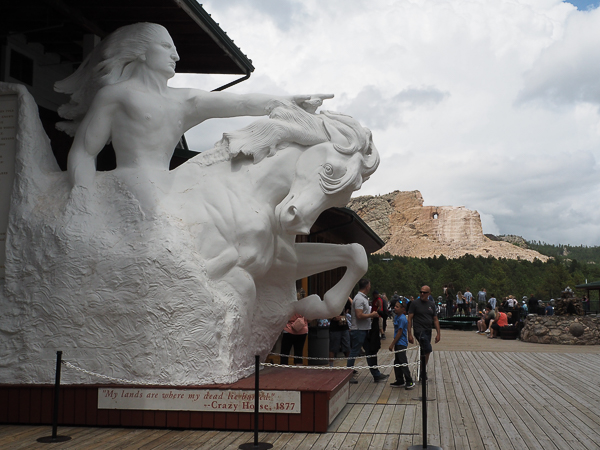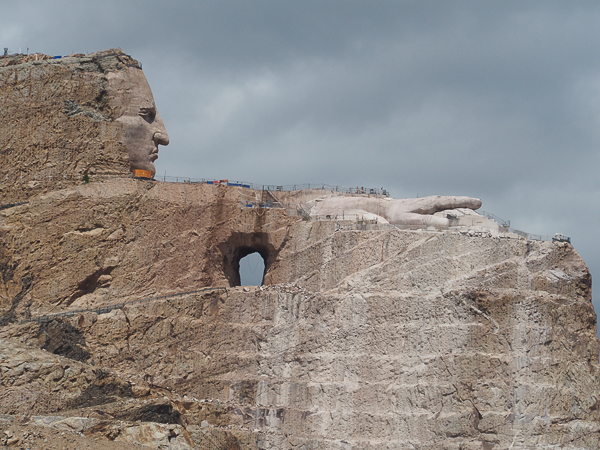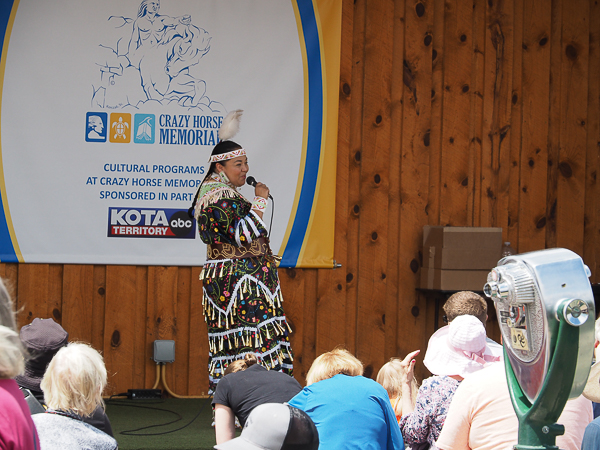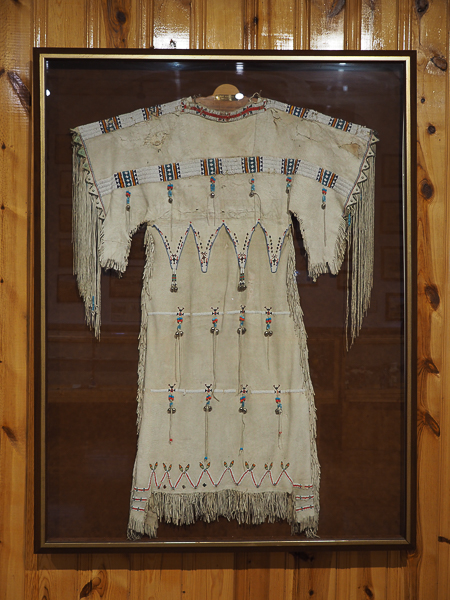After our time at Mt. Rushmore we proceeded to the Crazy Horse Memorial and the Indian Museum of North America. The ambiguity I felt at the Crazy Horse Memorial surpasses what I experienced at Mt. Rushmore. On the one hand, its existence is due to a request by a Lakota elder, Henry Standing Bear. On the other hand, many Lakota feel that Standing Bear did not have the authority to make the request. Crazy Horse himself resolutely refused to be photographed or painted during his lifetime and requested that his burial place be unknown and unmarked. Would such a monument have him spinning in his grave, so to speak? Wikipedia has a good summary of the controversy that reflects other information on the WWW. It is true that much of the narrative we heard at the site was tilted toward the sculptor's family, which continues the work.

The finished sculpture will be the world's largest. It depicts the warrior Crazy Horse galloping from the mountain pointing toward the Lakota homeland in the Black Hills. At present only the face and the hand of Crazy Horse are completed. Work is now shifting to the horse.
The actual sculpture-in-progress is in the background and the scale model in the foreground.

A more detailed view of the incomplete monument.
Signs said that until recently the inscribed outline of the horse's head could be seen, but now blasting has removed the rock that contained it.

This woman was summarizing the local history, telling stories, and singing songs.

Also at the site was The Indian Museum of North America. It contains exhibits from many tribes.
This horse regalia is a modern creation by an artist of the Oglala Lakota.
It's as elaborate as any Arabian Native Costume I've seen at shows.

This gorgeous 1890 beaded dress was used to explain how analysts can attempt to determine the tribal origin of an artifact. Various elements such as the number of skins used in the dress, the way in which they are sewn together, and the decorative elements such as beadwork and fringes can help identify its origin.
This dress is similar to garments in other collections that are identified as Cheyenne.
Wherever it came from, it is beautiful.
Click your "back" button to return to the previous page or click for our picture album.